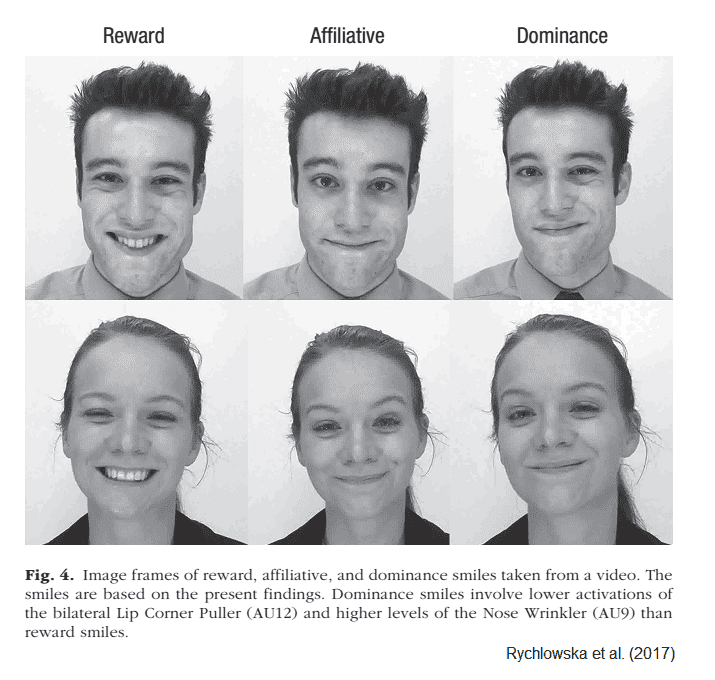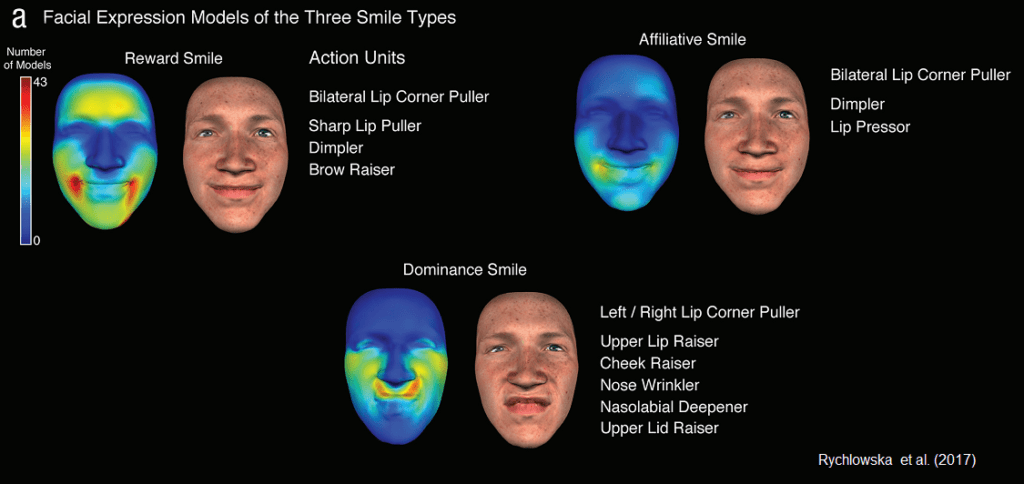People smile in a number of ways and in a wide range of contexts, but according to a new study, all of them fall into one of three categories: reward, affiliation, and dominance.
A smile can change the world

A smile is a strange thing. We do it by using our facial muscles, but more often than not, it’s more than just the mouth that smiles. A smile that doesn’t involve contracting the corners of the eyes, for instance, always looks a bit weird. It’s also not a completely involuntary reaction (like a grimace) — cross-cultural studies have found significant differences in the way different cultures smile; obviously, we can also fake a smile. But no matter how people smile around the world, smiling is one of the most important social cues, and people have been doing it forever. Actually, smiling predates the existence of modern people quite a lot.
Primatologist Signe Preuschoft traces the smile back over 30 million years of evolution to a “fear grin” stemming from monkeys and apes. Throughout history, smiling evolved differently in different species, and in humans, in different cultures.
Also contrary to popular belief, smiling isn’t really a precursor for laughing — although we use it a lot when we’re amused. More than anything, smiling is used to convey social information. Sexual advertisement is one of its main functions. Every flirt starts with a smile, and smiling at someone is one of the simplest and most effective ways of telling someone you find them appealing. But a smile can do much more than that. It can show reinforcement, it can be used for manipulation, or even to mask confusion. Different people smile in a lot of different ways, but according to researchers from the University of Wisconsin-Madison, they all fall into one of three categories.
Smile like you mean it
“When distinguishing among smiles, both scientists and laypeople have tended to focus on true and false smiles,” said Paula Niedenthal, a psychology professor at the University of Wisconsin-Madison.

The classical belief, she adds, is that a person smiles but isn’t happy, the smile isn’t sincere. But smiling is associated with so many emotional states, that belief is simply not true. In fact, it’s more than not true, it’s counterproductive. Believing that smiles are intrinsically linked to happiness skews our understanding of the process, and scientists want to change that idea.
- The first type of smile, they say, is the reward smile. This is the most intuitive one, “the kind of smile you would use with a baby, so he will smile back or do things you like”, says Niedenthal. It’s basically a way of saying you’re feeling good about something. It’s the “I like you” smile. The study describes them thusly:
Reward smiles are displayed to reward the self or other people and to communicate positive experiences or intentions… the reward smile may have evolved from the play face of primates and canids.
- The second type is the affiliative smile, which above anything, communicates tolerance. It’s the “I don’t necessarily like you, but you’re OK” smile. It’s used to ease in social bonding.
Affiliative smiles facilitate social bonding by communicating approachability, acknowledgment, and appeasement and thus may be functionally similar to the silent bared teeth display in chimpanzees that occurs during grooming, sexual solicitation, and submission.
- The third type has a darker side. The dominance smile is used to signify social status, but it also involves facial movement that is associated with joyfulness, which makes it a bit confusing.
Dominance smiles serve to maintain and negotiate social or moral status and are associated with superiority or pride, defiance, derision, and contempt. Unlike reward and affiliative smiles, dominance smiles are assumed to elicit negative feelings in observers. No homologous primate facial expression is known; however, some facial expressions displayed by high-status animal aggressors involve smile components.
Smile, humans
Rather ironically, in order to understand how humans smile, researchers analyzed thousands of computer-generated expressions, involving different (random) combinations of facial muscles. They asked volunteers to say whether each was a reward or affiliative or a dominance smile, or not a smile at all. After this, researchers looked at the algorithm that generated each smile and identified the ‘recipe’ for each type of smile.
“We now know which movements we should look for when we describe smiles from real life,” said Magdalena Rychlowska from Cardiff University, who was the lead author of the study. “We can treat smiles as a set of mathematical parameters, create models of people using different types of smiles, and use them in new studies.”
It’s not the first time a trichotomy of smiles has been proposed. Some of the current authors proposed it back in 2010, but this latest work does a lot to solidify that theory. Rychlowska et al. also published a paper in 2015 discussing the “main reasons for smiling” — but that study, just like this one, had a major limitation: participants were all white, American college students, and the virtual faces were also white. But taking this into consideration, the study concludes that “results highlight the versatile nature of the human smile, which can be used for multiple social tasks, including love, sympathy, and war.”

Aside from better understanding our social cues, this study can also have a more pragmatic result: it can help plastic and reconstructive surgeons better repair and reconstruct people’s facial bones and muscles, making them seem more realistic.
Journal Reference: Magdalena Rychlowska et al Functional Smiles: Tools for Love, Sympathy, and War. DOI: https://doi.org/10.1177/0956797617706082






